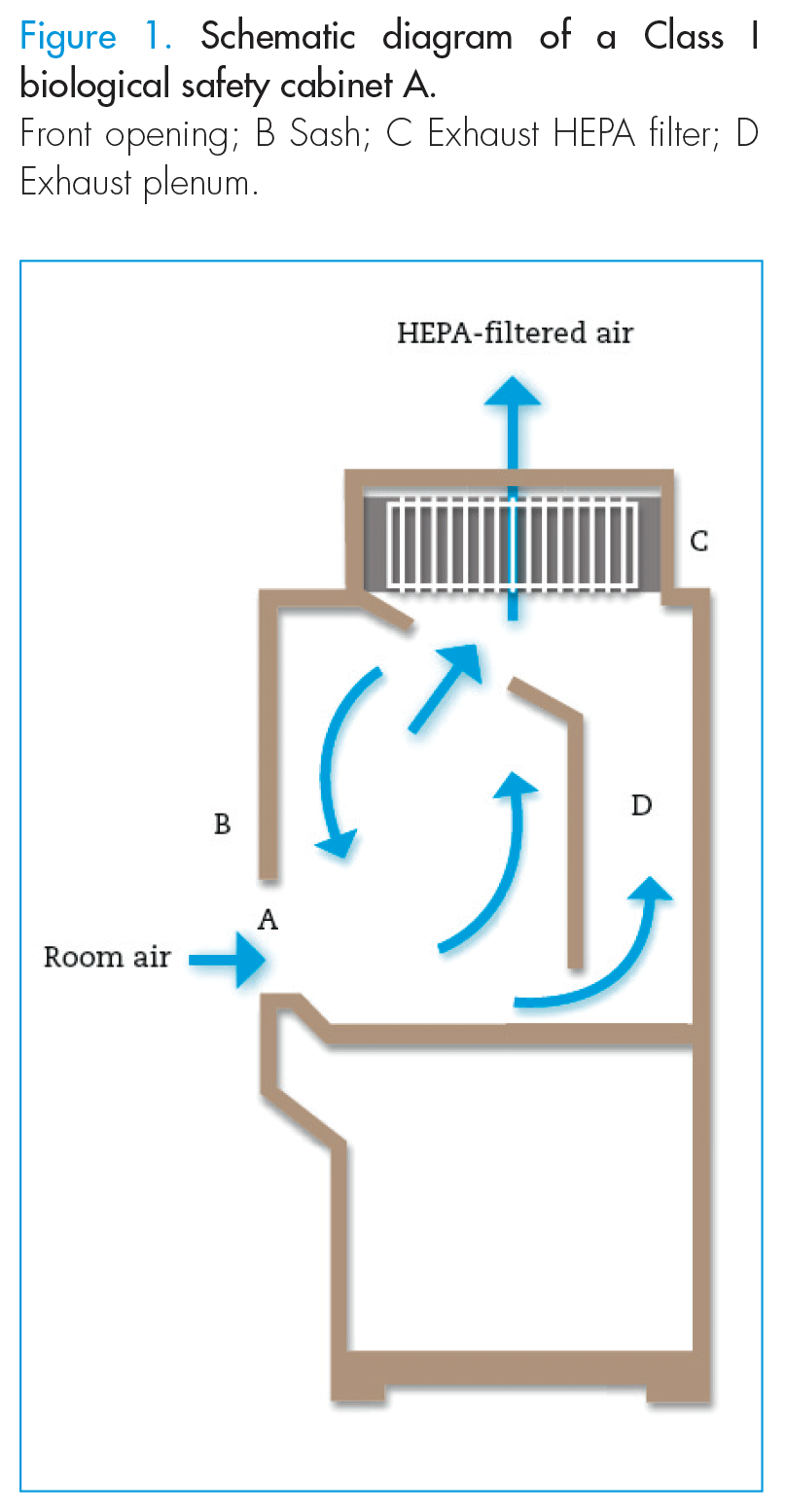Book traversal links for 6.1.2 Class I biological safety cabinets
Class I BSCs work by drawing unfiltered room air in through a front opening, passing it over the work surface, and then expelling it through an exhaust duct.
Class I BSCs protect workers but do not protect work products (such as specimens or cultures) against contamination because unsterilized room air is drawn over the work surface.
Figure 1 is a schematic diagram of a Class I BSC. Room air is drawn in through the front opening at a minimum velocity of 0.38 m/s (NSF/ANSI).²⁰ It then passes over the work surface and is expelled from the cabinet through the exhaust duct. The directional flow of air carries aerosol particles that may be generated on the work surface away from technicians and into the exhaust duct. The front opening allows the technician’s arms to reach the work surface inside the cabinet while he or she observes the surface through a glass window. The window can also be fully raised to provide access to the work surface for cleaning or other purposes.
The air from the cabinet is expelled through a HEPA filter: (a) into the laboratory and then to the outside of the building through the building’s exhaust system; or (b) to the outside through the building’s exhaust system; or (c) directly to the outside.
 Feedback
Feedback